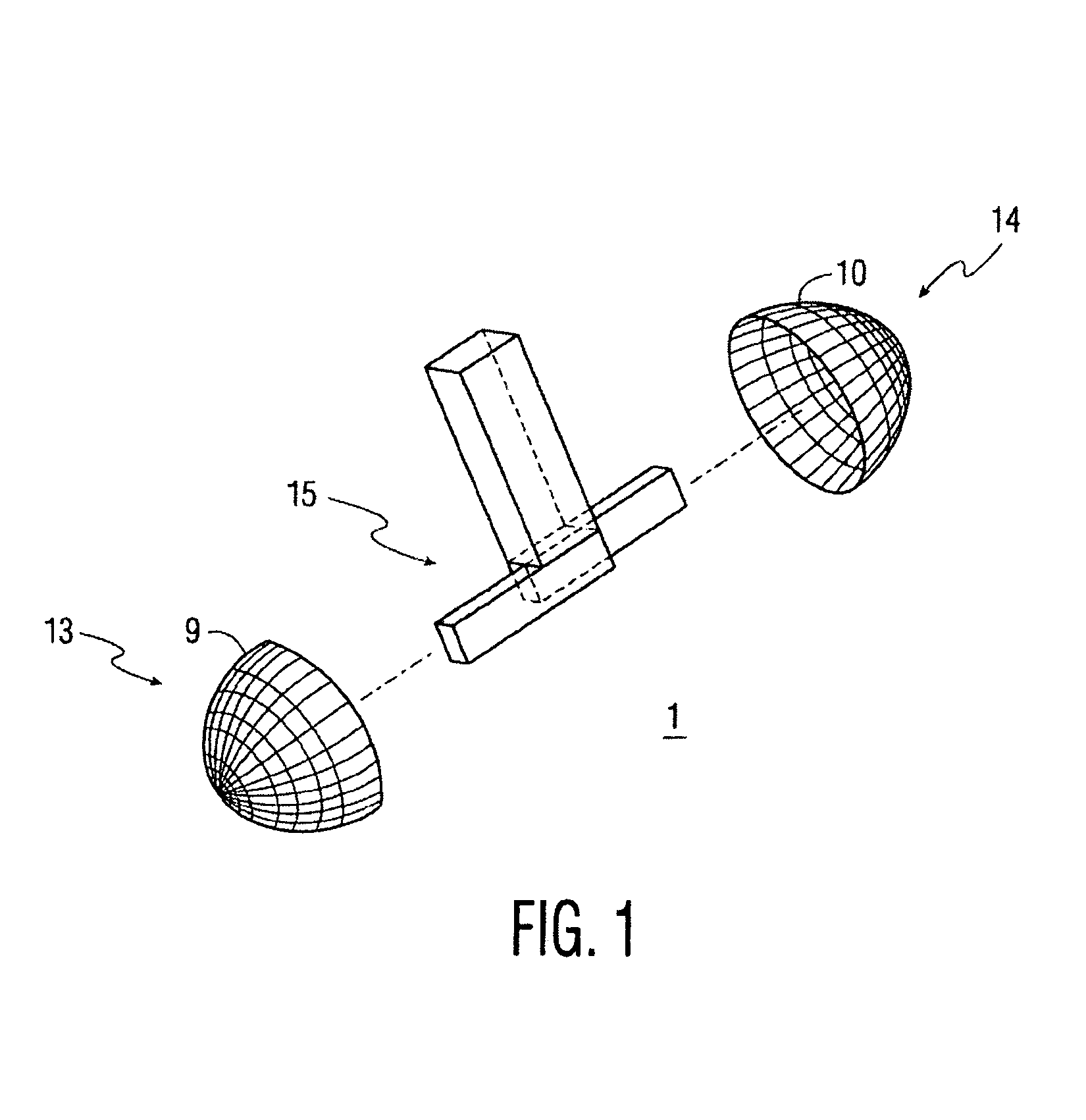Multiple lamp illumination system with polarization recovery and integration
a multi-lamp, illumination system technology, applied in the direction of instruments, lighting support devices, polarising elements, etc., can solve the problems of increasing cost and space requirements, insufficient means for uniform illumination and polarization recovery, etc., and achieve the effect of high brightness uniform illumination
- Summary
- Abstract
- Description
- Claims
- Application Information
AI Technical Summary
Benefits of technology
Problems solved by technology
Method used
Image
Examples
Embodiment Construction
[0008]In applications requiring a very high brightness, like for example, digital cinema, it may be desirable to use more than one lamp in the illumination system for significantly boosting the light throughput. This disclosure describes such an architecture that has also the advantage of recovering the polarization and integrating the light beam for delivering a high brightness uniform illumination. Moreover, this system requires a reduced number of lenses for low cost and also for making the system more compact.
[0009]FIGS. 1-2C show a dual lamp system 1, however the following discussion is also applicable to a four lamp system. In the dual lamp scheme, a burner (not shown) is set into a light-collector / light-reflector 9, 10 for each of two oppositely directed lamps 13, 14 with a light pipe system 15 disposed between the lamps 13, 14. An elliptical reflector is well suited as a collector, but the collecting means could be different. There is a collecting lightpipe 11, 12 having an ...
PUM
| Property | Measurement | Unit |
|---|---|---|
| aspect ratio | aaaaa | aaaaa |
| area | aaaaa | aaaaa |
| areas | aaaaa | aaaaa |
Abstract
Description
Claims
Application Information
 Login to View More
Login to View More - R&D
- Intellectual Property
- Life Sciences
- Materials
- Tech Scout
- Unparalleled Data Quality
- Higher Quality Content
- 60% Fewer Hallucinations
Browse by: Latest US Patents, China's latest patents, Technical Efficacy Thesaurus, Application Domain, Technology Topic, Popular Technical Reports.
© 2025 PatSnap. All rights reserved.Legal|Privacy policy|Modern Slavery Act Transparency Statement|Sitemap|About US| Contact US: help@patsnap.com



